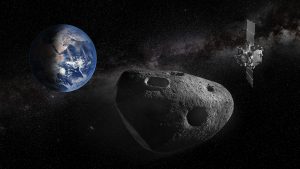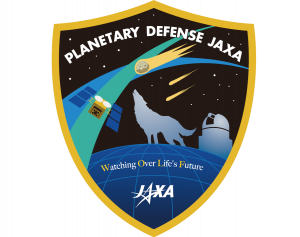
Facing the furnace: BepiColombo is getting ready to depart for Mercury
On July 6th, twin press conferences ran in the Netherland and Japan. It was the final chance to take a peek at BepiColombo; a joint mission between ESA and JAXA to explore our Solar System’s innermost world, Mercury. But what can we learn from a planet that orbits so close to the roaring inferno of our Sun?
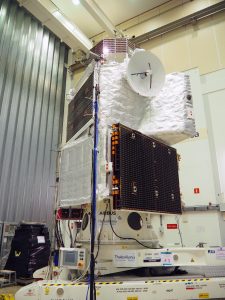
The idea of a mission to Mercury was first conceived in the late 1990s by both Japan and Europe. Upon discovering that their fellow space agency was planning a similar journey, the two teams combined and the BepiColombo mission began.
BepiColombo consists of two separate spacecraft that will separate upon arrival at Mercury and orbit the planet. The “Mercury Planetary Orbiter” (MPO) is the probe designed by ESA to study the surface and interior structure of the planet. The second probe is the “Mercury Magnetospheric Orbiter” (MMO), which has been built by JAXA’s Institute of Space and Astronautical Sciences (ISAS) to explore Mercury’s magnetic field.
Protection for life
The temperate conditions on the Earth’s surface are protected by our planet’s magnetic field. Wrapping around our home world, the field captures high energy particles that form the solar wind streaming from the Sun. These particles are channelled towards the poles where they create the northern and southern lights. Without this protective shield, our atmosphere would be stripped by the wind of particles and our surface likely sterilised.
The planetary magnetic field is therefore intimately linked to a planet’s evolution and habitability. This is particularly important when considering the exoplanets discovered close to red dwarf stars, such as the TRAPPIST-1 system. The weak radiation from these dim stars means that planets must orbit extremely close to the star to receive similar radiation levels to Earth. But on such short orbits, the planets will be exposed to strong stellar winds. To understand whether life could survive this, we need more examples of magnetic shielding. For that, we must go to Mercury.
Of the four terrestrial planets in our Solar System, only the Earth and Mercury have magnetic fields. Orbiting the Sun two-thirds closer than the Earth, Mercury’s environment is very different from our own. The planet has a much weaker magnetic field and its close proximity to the Sun sees it bombard by the solar wind. This creates an extreme testbed for how magnetic field and high energy particles interact.
But Mercury’s position also results in extreme temperatures. The surface of the planet can reach 427°C. So how can we design a spacecraft to withstand the Mercurian environment?
A spacecraft to withstand a furnace
Orbiting Mercury, a spacecraft gets a double blast of heat. The radiation from the Sun is ten times higher than it is close to Earth and this can be nearly doubled by the heat emanating from the planet’s surface. These twin sources produce one of the main engineering challenges for MMO.
To keep cool, a beverage cooler on the beach is designed to reflect incoming radiation from the Sun and radiate away heat. This is achieved by the material for the cooler having low emissivity (ability to emit and absorb radiation) at optical wavelengths where the Sun emits most of its radiation, and high emissivity at the longer infrared wavelengths of the cooler’s own radiation. It is like having a door that is open to the infrared, but slammed shut for optical rays.
The emissivity of a spacecraft’s surface can similarly reflect the Sun’s radiation while allowing internal heat to escape. However, the surface of Mercury is emitting infrared heat at similar wavelengths to the spacecraft. With the spacecraft emissivity high to give an open door to these wavelengths in order to allow heat to escape, the planet’s heat would be quickly absorbed and roast the orbiter.
Combating this problem drove the thermal design of MMO. Mirrors and conductive white paint reflect radiation, while regions with low emissivity for heat exhausts are orientated away from the planet surface.
BepiColombo is currently scheduled for launch next October. As is common for space missions with tough engineering challenges, this date as been pushed back from an earlier scheduling. It was extra time the engineers on MMO did not waste.
In a vacuum chamber with simulated solar radiation, additional tests were performed on the solar panels surrounding MMO.
“It’s a very big light,” said Hiroyuki Ogawa, Project Engineer on BepiColombo, as he describes the solar simulator. “It’s actually a lamp made by a Japanese company for cinema! The bulb is very close to the solar spectra.”
So close to the Sun, it would be logical to assume that relatively small solar panels would be needed to generate power for the instruments onboard MMO. However, the intense radiation was found to cause gradual damage to the panels over time, leading to a drop in electric power. To mitigate this problem, extra solar panels were added to MMO during this extra test phase.
A set of worlds to study
BepiColombo is part of a long-standing international collaboration between ESA and JAXA. One of our other shared project is JUICE; the JUpiter ICy moons Explorer. JUICE is an ESA-led mission to the Jupiter system with a planned launch date of 2022. Researchers at ISAS are on the science teams for two of JUICE’s eleven instruments and will provide hardware for three other instruments.
A major focus for JUICE is the Jovian moon, Ganymede. Like Mercury and the Earth, Ganymede has a magnetic field that interacts with the high energy particles caught in Jupiter’s much stronger field.
For Yoshifumi Saito, the Principal Investigator for the Mercury Plasma Particle Experiment from BepiColombo and Project Manager of the JUICE ISAS team, the link between the Jovian and Mercury missions is very important.
“I started to investigate the interaction between the Moon and the solar wind with the SELENE mission ten years ago,” he explained.
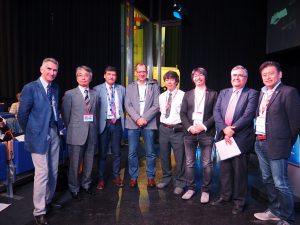
Our Moon has no magnetic field and no atmosphere and represents the first step in Saito’s plan to understand the interaction between particles and planetary magnetic fields. The second step is Mercury, which also has no significant atmosphere but does have a magnetic field. Ganymede is the third step as the moon has both a magnetic field and a tenuous atmosphere, although far thinner than that on Earth.
“By investigating the interaction between particles and different planets and satellites, we can obtain a universal view,” said Saito.
The joint press conferences in July were hosted by ESA and presented the last chance to see the complete BepiColombo spacecraft with both orbiters before it is dismantled for final tests. The two orbiters will next be united when BepiColombo is ready for launch next October. At the press conference in the Netherlands, both the Japan and European teams came together to present the combined spacecraft.
“It had been so long since the start of the project, but we finally had the two flight spacecraft next to us,” said Go Murakami, project scientist on BepiColombo who visited the Netherlands. “Our journey to Mercury will start soon.”
Further information:
ESA Press Conference in July
BepiColombo ISAS mission page
BepiColombo JAXA news
JUICE ISAS mission page (Japanese only)
JUICE ESA mission page (English)

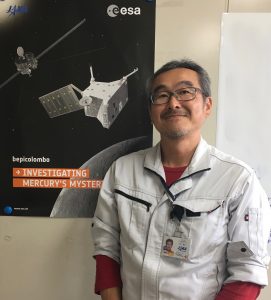

 Previous Post
Previous Post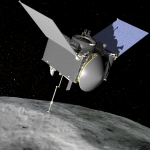 Next Post
Next Post
